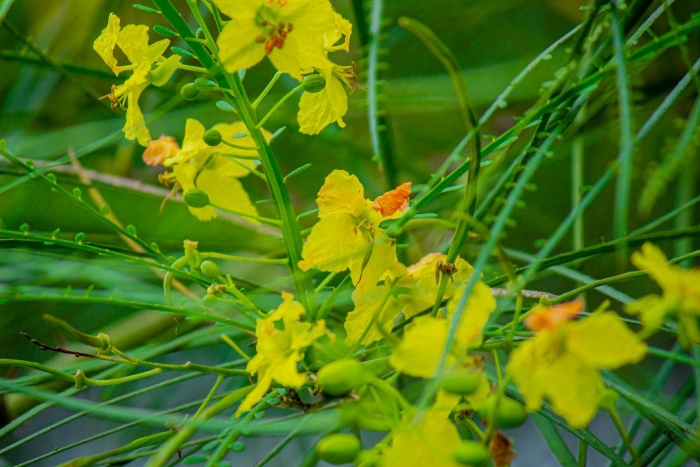Palo Verde
(Parkinsonia aculeata)
Palo Verde (Parkinsonia aculeata)
/
/

Ibrahim Achiri
CC BY-SA 4.0












































































Estimated Native Range
Summary
Palo Verde is valued for its drought tolerance, becoming a shorter shrub in arid conditions and a taller, spreading shade tree in moist, humus-rich environments. It is used in xeriscaping, as an ornamental tree in landscapes, and for reforestation in arid zones due to its ability to fix nitrogen. It thrives in full sun and can grow in a wide range of dry soils, including sand dunes, clay, alkaline, and chalky soils, at altitudes of 0–1,500 meters (0–4,921 ft) above sea level. The plant requires minimal water once established and is well-suited to soils with medium, fast, or slow drainage. However, Parkinsonia aculeata is known to be invasive in some regions outside its native range, so caution is advised when planting it in such areas.CC BY-SA 4.0
Plant Description
- Plant Type: Tree, Shrub
- Height: 10-20 feet
- Width: 12-15 feet
- Growth Rate: Rapid
- Flower Color: Yellow
- Flowering Season: Spring, Summer
- Leaf Retention: Deciduous
Growth Requirements
- Sun: Full Sun
- Water: Low, Medium
- Drainage: Fast, Medium, Slow
Common Uses
Bank Stabilization, Bee Garden, Bird Garden, Butterfly Garden, Deer Resistant, Drought Tolerant, Edible*Disclaimer: Easyscape's listed plant edibility is for informational use. Always verify the safety and proper identification of any plant before consumption., Fragrant, Hummingbird Garden, Low Maintenance, Rock Garden, Salt Tolerant, Showy Flowers
Natural Habitat
Arid regions and desert washes
Other Names
Common Names: Mexican Paloverde , Jerusalem Thorn , Jelly Bean Tree , Horse-Bean , Barbados Flowerfence , Retaima , Jerusalemdorn , Palo De Rayo , Palo Verde Mejicano , Espinillo
Scientific Names: Parkinsonia aculeata , Parkinsonia inermis , Parkinsonia spinosa , Parkinsonia thornberi
GBIF Accepted Name: Parkinsonia aculeata L.